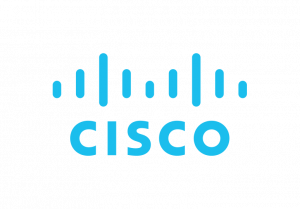Successful cloud adoption requires agencies to address their people, work and technology.
Recognizing this, the federal government released a policy in 2018 that can guide state and local agencies through cloud adoption. Cloud Smart simplifies adoption by explaining how it will impact agencies’ employees and work. It also clarifies how to maximize cloud’s value to support government missions.
Cloud Smart focuses on three pillars of successful cloud adoption:
- Security — Agencies are encouraged to modernize their security policies, so they focus on risk-based decision-making. Cloud Smart also urges agencies to continuously monitor their data, so it stays private and secure.
- Procurement — Agencies should share knowledge about acquiring cloud products and services with one another and examine the market for successful cloud tools before purchasing.
- Workforce — The policy instructs agencies about the acquisition, cybersecurity and cloud engineering talent that cloud adoption needs. Finally, it guides agencies about how to recruit, retrain and upskill their workforces so they have these abilities.
Using Cloud Smart as a roadmap, these guidelines can accelerate cloud integration for agencies while reducing their risks.
Part of what makes cloud-ready networks an attractive investment is their reliance on software-defined networking in a wide-area network, or SD-WAN. A WAN connects branch offices and remote users to a central data center. Then, SD-WAN handles changes in user traffic by pooling network resources and managing them virtually. The result is a better user experience.
As agencies adopt more cloud-based services, they may struggle to handle their bandwidth. SD-WAN can solve this problem by delivering latency-sensitive services such as videos more easily. Subsequently, SD-WAN can make cloud-ready networks more efficient and reliable for agencies.
So, how do agencies flourish with cloud-ready networks? Leveraging SD-WAN, agencies can deliver the best application experience possible for citizens and employees across multiple cloud environments.
Traditionally, many state and local agencies centralized their WAN alongside their internet traffic security. First, this hosted all an agency’s applications, services and internet traffic in one location. Second, agencies could easily enforce security policies for such hubs.
Despite these benefits, centralized WAN doesn’t mesh well with cloud. As agencies start or accelerate cloud integration, their legacy networking becomes costlier and less efficient as they try managing multiple cloud environments.
But SD-WAN finds the best network connection between an agency’s traffic and its cloud-based application and services. Fueled by SD-WAN, cloud-ready networks deliver public services cheaper and more efficiently.
Cloud-ready networks can additionally facilitate a zero-trust approach to cybersecurity and IT operations for agencies. Zero trust centers on extending security throughout an agency’s network rather than just its IT perimeter. This strategy relies on five tactics:
- First, assume all traffic is potentially threatening until it’s inspected, authorized and secured.
- Second, give users access to only the resources their jobs require.
- Third, continuously monitor all internal and external traffic for possible threats.
- Fourth, target potential problems in real-time to reduce risk.
- And fifth, practice zero trust in an agency’s workforce, workloads and workplace.
Collectively, SD-WAN and zero trust security prepare agencies for their cloud journeys. Cloud Smart helps agencies reach cloud-ready networks intelligently.
This article is an excerpt from GovLoop Academy’s recent course, “Making State and Local Networks Cloud-Ready,” created in partnership with Cisco. Access the full course here.






Leave a Reply
You must be logged in to post a comment.